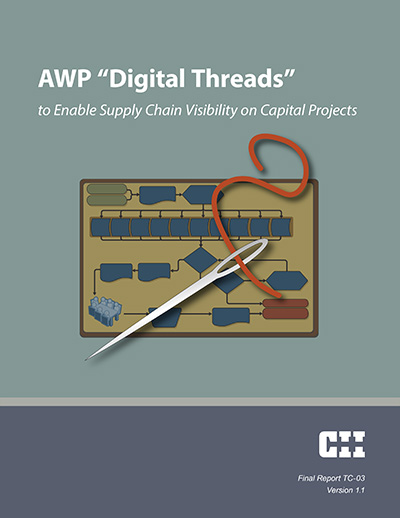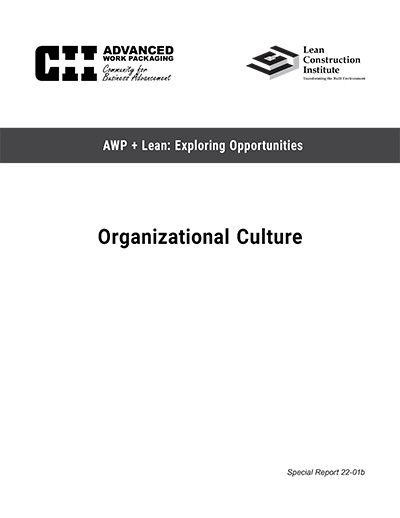
Managing Transitions between Construction Completion, Pre-Commissioning, Commissioning, and Startup
Several prior studies indicate that commissioning failures are too common in frequency and extremely costly in impact. The business case for action is clear, yet the transitions between construction/pre-commissioning/commissioning/startup/close-out (abbreviated CCSU in this publication, emphasizing the construction component) remain challenging for many reasons. This is primarily due to contractual separations and the multitude of organizational interfaces and handoffs during CCSU.
Achieving project and commissioning success requires a solid understanding of the CCSU activities to be undertaken and the associated responsibility assignments. CII created Research Team 333 (RT-333), Transition Management between Construction Completion, Pre-Commissioning, Commissioning, and Startup, and challenged it to provide answers to the essential question: How can the industry establish or clarify the accountabilities and responsibilities among construction completion, pre-commissioning, commissioning, and operations functions?
In response to this essential question, RT-333 developed a 17-step implementation process that integrates the key findings from all three CII research teams that have addressed commissioning: RT-121, Planning for Startup; RT-312, Best Practices for Commissioning and Startup; and RT-333 itself.
The RT-333 research developed four important deliverables:
- CCSU Activity Flowchart – RT-333’s unique contribution to the understanding of Commissioning and Startup was a flowchart of 124 CCSU activities, organized by relevant project phase and four thematic categories.
- CCSU RACI Matrix – The RACI matrix builds on the CCSU activity flowchart, defining whether each activity’s manager is Responsible, is Accountable, should be Consulted, or should be Informed. While the Commissioning/Startup manager is generally responsible for 49 of the activities, 39 other activities are generally the responsibility of three other key managers: Project manager, Construction manager, and Operations manager.
The RACI matrix is intended to serve only as a point-of-departure for in-depth management-team discussions. The ultimate objective of this research is for the project team to achieve agreement and full alignment of understanding of who is responsible for what.
- CCSU Hot Spots – RT-333 provided further insight into the challenges of CCSU transitions by identifying “hot spots”: CCSU activities that generally either have unclear responsibility assignments, recurring problems, or deficiencies, or that often fail to deliver on expectations. Twenty CCSU hot spots surfaced from research-based screening efforts. Surprisingly, three-quarters of the selected hot spots occur during the Construction phase, emphasizing the challenges of transitions and indicating a need for greater involvement and alignment by the project management team during this phase.
Each of the 20 hot spots is characterized by 10 fields of information, including common impacts, causal factors, and prevention/mitigation strategies, for which RT-333 conducted trend analyses. The research team also cross-linked the hot spots with the 16 commissioning/startup critical success factors previously identified by RT-312. This analysis further underscores the particular importance of CCSU alignment, execution planning, and check-sheets.
- Heidelberg Spar Case Study – Lastly, RT-333 documented an illustrative case study to demonstrate the substantial value that results from timely and effective mitigation efforts for targeted (i.e., project-specific) CCSU hot spots.
Collectively, the findings from this study provide focused and substantive guidance on how project teams can enhance the effectiveness of CCSU transitions.
The graphic below depicts the CCSU project phases, milestones, and handover/transition events.
In response to the challenges of CCSU, RT-333 developed a 17-step implementation process that integrates the key findings from three CII research teams that addressed commissioning: RT-121, Planning for Startup; RT-312, Best Practices for Commissioning; and RT-333 itself.
RT-333 developed a flowchart of 124 CCSU activities, organized by project phase and four thematic categories. Twenty CCSU “hot spots” (highlighted in yellow) surfaced from research-based screening efforts. The team documented the Heidelberg Spar case study to demonstrate the substantial value that can result from timely and effective mitigation efforts for targeted CCSU hot spots.
The hot spots provide further insight into the challenges associated with CCSU transitions. The hot spots identify activities that generally have unclear responsibility assignments, recurring problems or deficiencies, or that often fail to deliver on expectations. Surprisingly, three-quarters of the selected hot spots occur in the Construction phase, emphasizing transition challenges and indicating a need for greater involvement by the project management team at that time.
Each of the 20 hot spots is characterized with 10 fields of information, including common impacts, causal factors, and prevention/mitigation strategies, for which trend analysis has been conducted. RT-333 cross-linked the hot spots with the 16 CSU Critical Success Factors identified previously by RT-312 (IR312-2, Vol. I, Table 2, pp. 14-16). This analysis underscores the particular importance of alignment, execution planning, and check-sheets, among others.
RT-333 developed a matrix to show Responsible, Accountable, Consulted, and Informed assignments for all 124 CCSU activities, mapped across 60 common project organizational functions. While the CSU manager is generally responsible for 49 of the activities, 39 other activities are generally the responsibility of three other key managers: project manager, construction manager, and operations manager.
RT-333 developed the RACI matrix only to serve as a point of departure for in-depth project-specific management-team discussions. The ultimate objective is for the project team to achieve full alignment of understanding of who is responsible for what.
RT-333 tabulated the activities for the four major management functions that are responsible and/or accountable for a large share of CCSU activities.
RT-333 identified 20 Hot Spots, then characterized them with information collected from industry experts, including causal factors and prevention/mitigation strategies.



